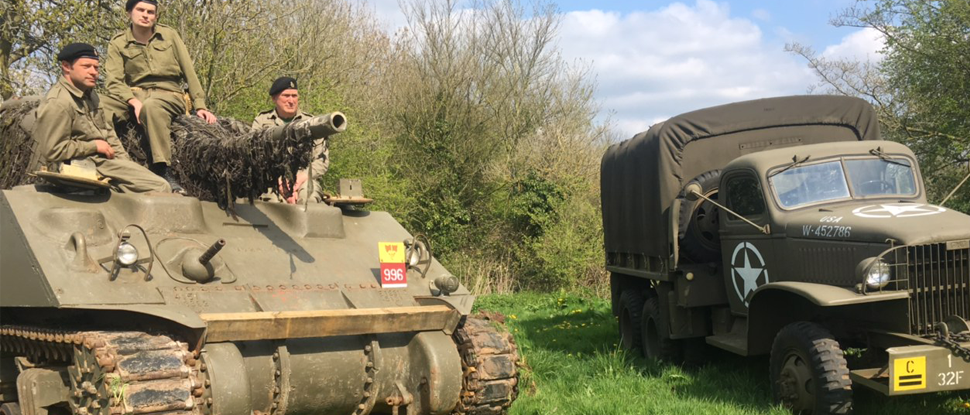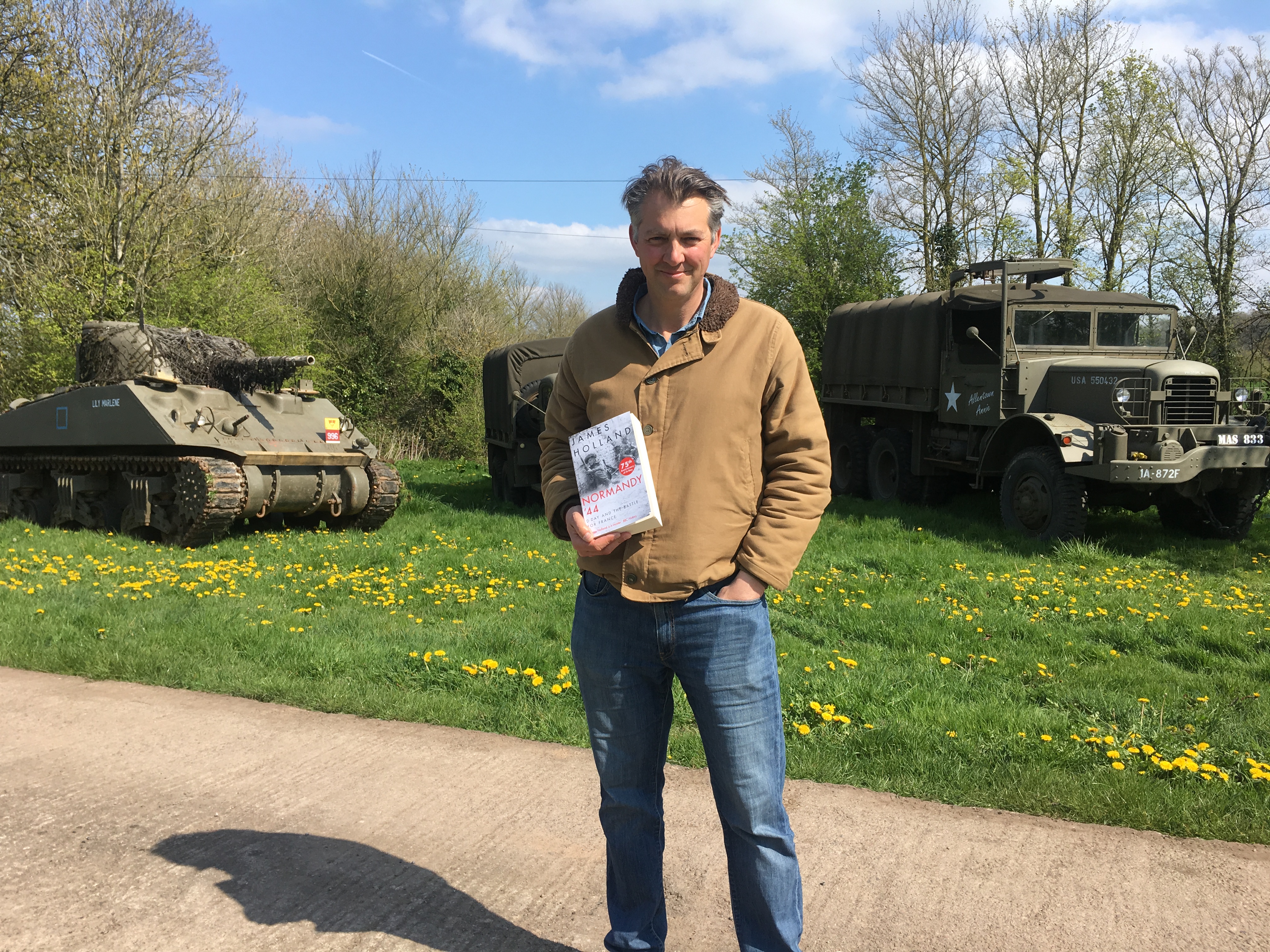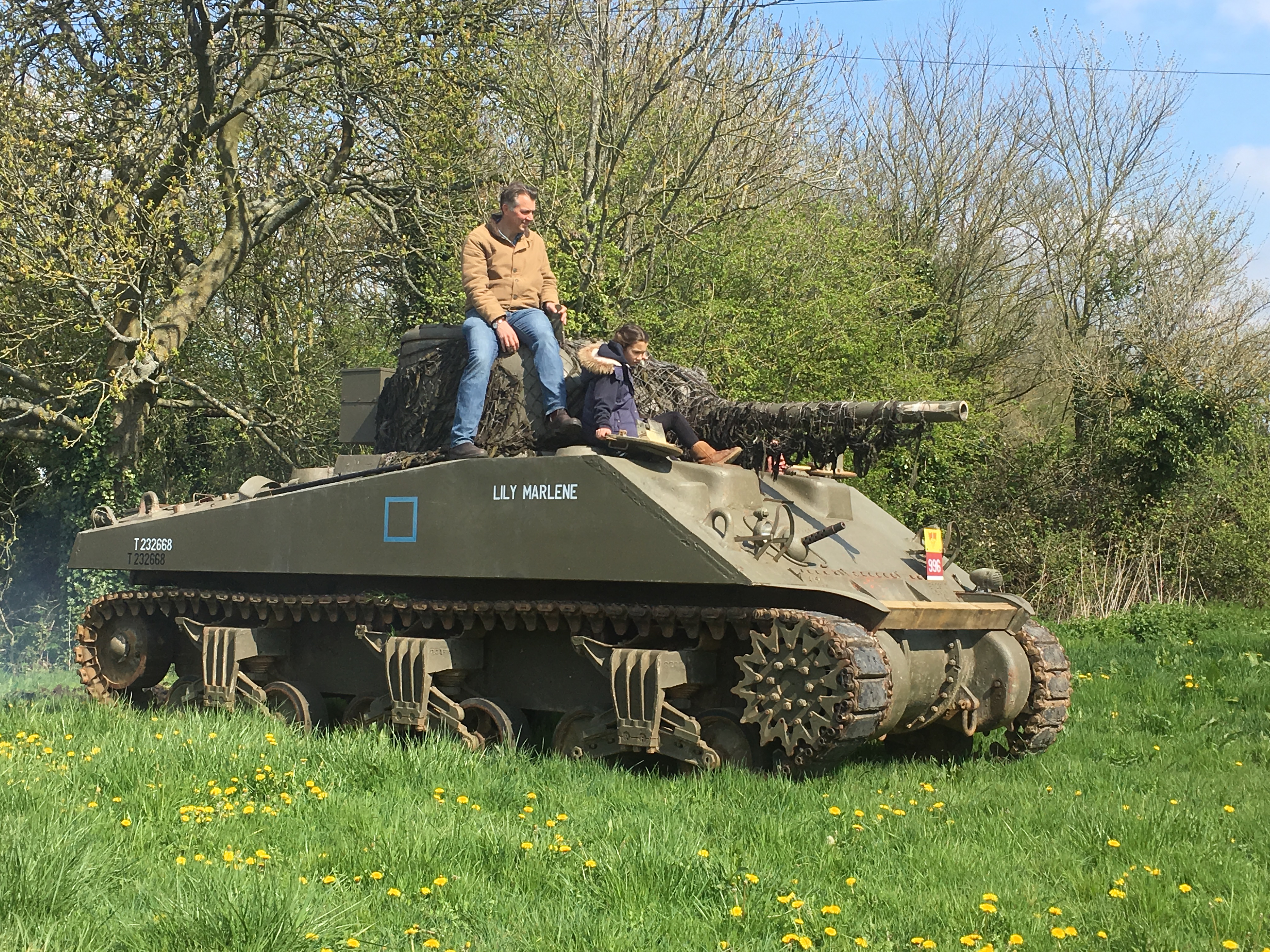- Home |
- Search Results |
- 6 popular myths about the D-Day landings debunked by historian James Holland
6 popular myths about the D-Day landings debunked by historian James Holland
Ahead of the 75th anniversary of D-Day and the Normandy landings, one of World War Two's defining moments, renowned historian James Holland debunks six popular myths surrounding it.

1. The myth: D-Day was a predominantly American operation
REALITY: For many people, D-Day is defined by the bloodshed at Omaha – the codename for one of the beaches where Allied forces landed – and the American airborne drops. Even in Germany, the perception is that D-Day was a largely American show; in the recent German TV mini-series, Generation War, there was a reference to the 'American landings' in France. But despite Band of Brothers, despite Saving Private Ryan, and despite those 11 photographs by Robert Capa taken in the swell on that morning of 6th June 1944, D-Day was not a predominantly American effort; rather it was an Allied effort, with, if anything, Britain taking the lead.
Yes, Dwight D. Eisenhower, the Supreme Allied Commander, was American, but his deputy, Air Chief Marshal Sir Arthur Tedder was British, as were all three service chiefs. Air Marshal 'Mary' Coningham, Commander of the tactical air forces – those directly supporting the ground troops – was also British. The plan for Operation Overlord – as D-Day was codenamed – was largely that of General Sir Bernard Montgomery, the land force commander: he was, of course, British. The Royal Navy was overall responsible for Operation Neptune, the naval plan. It might surprise many to know that of the 1,213 warships involved, 200 were American and 892 were British; and of the 4,126 landing craft involved, 805 were American and 3,261 were British.
Indeed, 31% of all US supplies used during D-Day came directly from Britain, while two-thirds of the 12,000 aircraft involved were also British, while two-thirds of those that landed in occupied France were British and Canadian (Canada was then a British Dominion and Canadian and British troops shared uniforms, equipment and weapons). Despite the initial slaughter at Omaha, casualties across the American, and British and Canadian, beaches were also much the same.
This is in no way meant to belittle the U.S. effort; rather it is meant to add context. It is not helpful to anyone to view their history through the narrow prism of their own experiences: rather a wider, 360-degree view, is far more instructive. History needs to teach us as well as entertain.
2. The myth: American forces were ill-disciplined amateurs

REALITY: By the end of the war, the U.S. had the best armed services in the world, bar none, and the 77-day Normandy campaign did a huge amount to help them reach that point. But repeatedly throughout the war, US troops showed their incredible ability to learn on the hoof, and then swiftly implement changes.
Normandy was a showcase for American tactical and operational flexibility. At the start of the campaign, the Americans found themselves fighting through the Normandy bocage, an area of small fields lined with thick raised hedgerows and narrow, sunken lanes for which they hadn't really trained because it had been expected that the Germans would quickly retreat after a successful Allied landing. For the German troops, the bocage offered both cover and great ambush opportunities, with mortar teams and machine-guns hidden behind the hedgerows. To effectively break through the bocage, US infantry needed the support of tanks to blast their way forward, but even thirty-ton Sherman tanks couldn't get through these hedgerows. The ingenious solution came from a lowly U.S. sergeant, who dreamt up the idea of attaching a hedge-cutting tool built from German beach obstacles to the front of a Sherman tank. Within a week, his prototype had been made and a few days after that he was able to demonstrate it in front of General Omar Bradley, the US First Army commander. He was so impressed with what he saw, he ordered the conversion of as many Shermans as possible, as quickly as possible. Within a fortnight, the device had been fitted to 60% of all US Shermans in Normandy.
In no other army in the world would a solution created by a junior non-commissioned officer have been implemented quite so readily and swiftly. It showed the Americans' incredible tactical flexibility; and this was just one example. During the campaign huge strides were also made in the development of close air support, and in improving co-ordination between infantry, artillery and armour. Medical services advanced so much that one in four casualties returned to the battlefield after treatment. For 1944, this was remarkable.
3. The myth: The allies allowed themselves to get bogged down in Normandy
REALITY: It's true that in the pre-invasion estimates for the campaign, the Allies expected to be roughly 50 miles inland. This was based on experience of German retreats in North Africa and Italy. But Hitler ordered his forces to fight as close to the coast as possible and not give an inch. On a map, it seemed the Allies weren't making much progress, but actually, the German policy worked to the Allies' advantage. By continuing to fight close to the coast, the Germans remained in range of Allied off-shore naval guns and allowed themselves to be out-smarted by an enemy that had worked out how to defeat them.
By 1944, the Allies had realised that tactically, the Germans were rigidly predictable. The Germans were very proud of their military heritage and drew on doctrine established by men like General Carl von Clausewitz (1780-1831), who wrote the seminal pamphlet, On War. Part of their DNA in World War II was to always counter-attack – the idea was to strike back at the moment the enemy had over-extended himself.
But the Allies realised that this penchant for counter-attacking meant the Germans, previously well dug-in, then moved into the open and exposed themselves. The Allied trick was to probe forward, get the Germans to counter-attack – which they always did – then hammer them with a combination of devastating artillery, air- and off-shore naval fire. By the end of the Normandy campaign, the Germans had hemorrhaged men and machines and two entire armies were all but destroyed. It's true a handful escaped the attempted encirclement around Falaise, but it was still a massive Allied victory. In the rapid advance that followed, the Allies sped more miles more quickly than the Germans had done in the opposite direction back in May 1940 during the Blitzkrieg in France.
4. Myth: German soldiers were better trained than Allied soldiers

REALITY: The best German units might have been at the start of the war, but not by 1944. There were a few exceptions – such as the Panzer Lehr, for example, but for the most part, German units were nothing like as well trained as Allies. Some Allied units in Normandy had been training for the best part of four years, while many German troops had had little more than a few weeks’. The kampfgruppen – or battle groups – the ad hoc units that traditionally are seen to showcase their tactical flexibility, were borne of extreme shortages and desperation towards the end of the war. And even these units still kept counter-attacking, and exposing themselves to Allied firepower in the process.
The Fallschirmjäger (paratroopers) were acknowledged to be among the very best trained troops in the German Armed Forces, yet one Fallschirmjäger I spoke to recently had barely had any training at all, save a few route marches and practice at laying mines. He had never trained with a tank, had no transport at all, and when sent to the front from Brittany, marched 200 miles. His case was not untypical. More than 80% of German forces in Normandy were dependent on their feet and horses and carts for transport. He reached St Lo, a major Normandy town in the American sector, on 12th June with a company of 120 men. When he was captured on 19th August, he was one of just nine still standing, the rest killed, wounded or captured.
Nor did the word aufstragstaktik – better known today as Mission Command – mean anything to him whatsoever. This doctrine, the ability to think on one's feet and use initiative, has been repeatedly hailed as what set the German soldier apart. Training had become so reduced it was simply impossible to implement.
5. The myth: The tactical skill of the Germans
REALITY: The dogged determination of the Germans to fight has been confused with tactical skill. Recent post-war conflicts in Afghanistan, or even Vietnam a generation earlier, have proved that western forces can have the best trained troops, best kit, and most lethal weapons in the world, but still struggle to defeat a massively inferior enemy. As the Taliban have shown, it is very difficult to completely defeat your enemy if they don't want to be defeated. The only way is to kill them all.
This is why the Germans took so long to be defeated in Normandy and beyond: they were still a very dangerous and deadly enemy, with plenty of powerful weapons and a fierce determination to keep fighting. This was for a number of reasons: Nazi indoctrination, a profound sense of duty, and the threat of execution for deserters. In World War I the Germans executed 48 men for desertion; in World War II, that figure was 30,000.
6. The myth: America and Britain got off lightly in World War Two
REALITY: Allied front line troops suffered horrifically in World War II. Democracies, such as Britain and America, quite rightly, were trying to achieve victory with as few casualties as possible. For the most part, they did this very successfully, using technology and machinery to shield lives as much as possible. However, the hard yards still had to be won by the infantry, tank units and artillery; technology meant the Allies needed fewer of them than a generation earlier, but those in the firing line had pulled a very short straw: losses to frontline troops were proportionally worse than on the Western Front during World War I. Over the course of the 77-day battle, the average daily casualty rate was 6,870, worse than the Somme, Passchendaele and Verdun, three battles usually viewed as a benchmark for wanton slaughter. Normandy was absolutely brutal.
Watch: James on the differences between British and German tanks